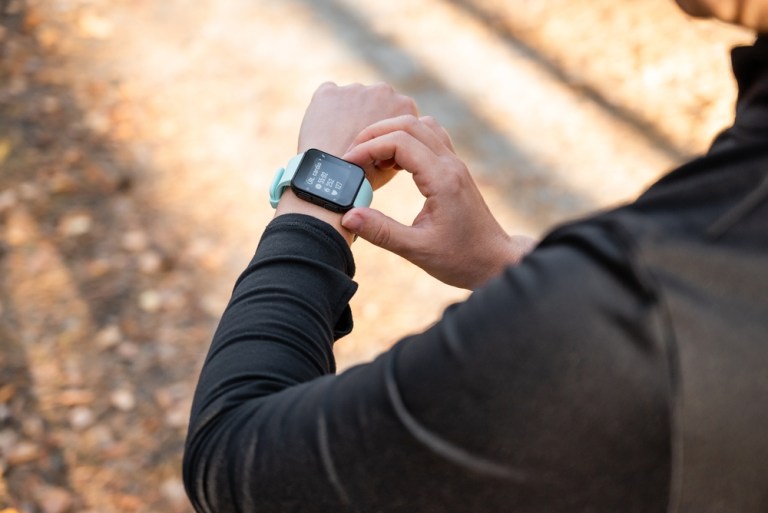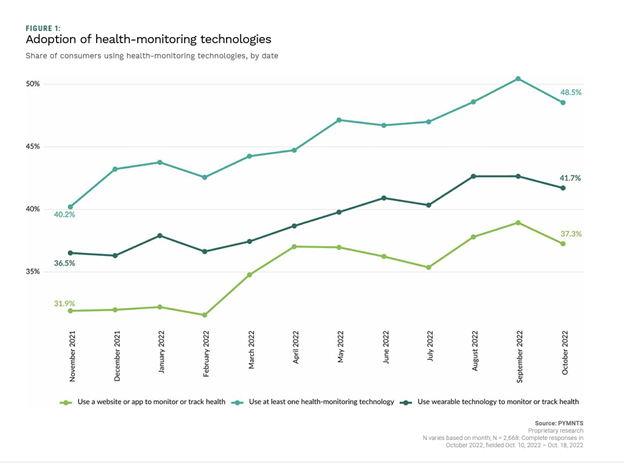
This next installment of PYMNTS’ miniseries on consumer behavior that became more widespread as a result of the pandemic focuses on healthcare monitoring technology.
Wearables and other healthcare monitoring tech were just catching on when COVID-19 hit, and the crisis in many ways set the perfect stage for wearables to be propelled into widespread popularity.
With doctor offices at first being shuttered during lockdowns and then notoriously difficult to find appointments for, digital tools became a bridge. Many consumers had wellness on the mind and were particularly attuned to their heart rate, oxygen levels and temperature for both routine and specialized health purposes.
Use of these digital healthcare-related tools has extended beyond the pandemic’s emergency status, and PYMNTS’ data suggests that wearables and health monitoring technologies are on track to become a permanent part of participating consumers’ daily lives.
Along a slightly bumpy upward trajectory, adoption of health-monitoring tech is on the rise, illustrated in the PYMNTS collaboration with CareCredit, “Connected Wellness: Tracking The Rise Of Health-Tracking Technology.” Here, all three tracked categories — use of a health-monitoring website or app, use of at least one health-monitoring technology and health-monitoring wearable use — have seen upticks.

With healthcare app and tool use (a category that includes wearables) overall growing 21% between November 2021 and November 2022, the report finds that, “health-tracking technology is the single most used connected health technology in the U.S. Roughly one-third of consumers used other connected health technologies last month, including telemedicine appointment portals and social exercise.”
Health-monitoring wearable use is led by Gen Z, and PYMNTS’ March “ConnectedEconomy™ Monthly Report” found that 30% of the generation use these tools daily. Millennials weren’t far behind, with 27% saying the same. This strong adoption by younger generations gives credence to wearable and other healthcare-monitoring tech’s staying power. And with both runway-ready and robust wearable jewelry coming to market, some companies are seeing a path to profitability in this niche.
Wearables and other healthcare technologies may have gained popularity during the pandemic, but they are now enjoying adoption into consumers’ daily lives on their own. And as other installments of this miniseries will illustrate, some of the biggest digital gains from the recent health crisis are set to allow consumers to be more connected permanently.